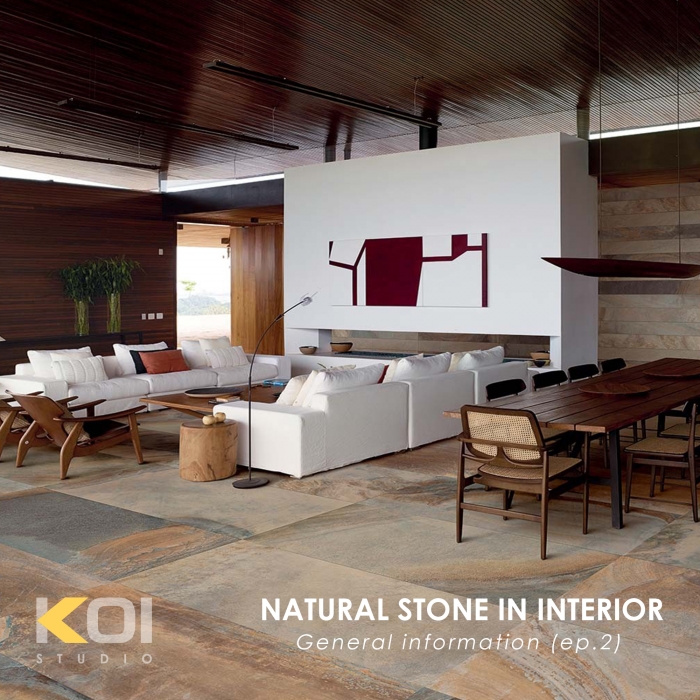
Natural stone is a frequently used material in architectural and interior design due to its diverse and sophisticated beauty. Even using natural stone is becoming a trend as this material appears in every interior style from minimalistic to ancient or modern. There are 7 main types of Natural Stone: Granite, Marble, Basalt, Slate, Limestone, Travertine, ONYX. Let learn more about these kinds of stone and their applications in practice.
Slate is a fine-grained, foliated, homogeneous metamorphic rock, which is composed of Shale and Quartz due to high temperature and pressure over 300 million years under special geological conditions. Most of them are located in Lai Chau Province of Vietnam. Lai Chau Slate Stone is not only favored in Vietnam but also recognized by other countries around the world as the best quality Slate in the world. Slate is very suitable for roofing, paving, interior and exterior decoration... The natural black color of Stale Stone has created a luxurious, ancient look, especially the black stone roof in French architecture or Neoclassical architecture. The outstanding advantages of Slate Stone: The color is natural, beautiful and does not fade with time. Waterproof, no moss. Good friction ability so effective anti-slip. Good heat and cold resistance. Resistance to corrosion by acids. With the superiority of Slate Stone, they are also used in the construction of miniatures, fountains, wall tiles, pillar cladding, garden walkway paving…
Limestone is a sedimentary rock, carbon-rich in composition and mainly formed from calcium from many bones of marine organisms such as snails, shells, and corals. Limestone is formed in the main inorganic or organic process of marine sediments. Only about 15% -25% of the Limestone reserves are above sea level.
Limestone colors range from white to ash, light green, yellow and dark pink, black. The limestone is soft and has a low hardness. They are suitable for all types of use, from patio paving, walls, use in the kitchen, living room, bedroom, even outdoor spaces in entertainment and pulse areas, or around the swimming pool. Limestone has very good durability so that the price can be slightly higher than other common tiles. But the price to pay is extremely worthy because their durability will last for a lifetime. All you need to do is waterproof the stone if used in damp areas.
Travertine is a metamorphic rock, found in hot springs or limestone caves. They are usually fibrous or concentric, white, brown, cream, and even a rust-resistant color, formed by the precipitation of calcium carbonate. Travertine has a variety of designs. Vibrant colors and earth tones of Travertine include cream, yellow, gray, and brown colors that easily blend with other materials in the design, creating warmth for the home space. Especially the color is determined by the iron content.
Travertine stone has higher hardness than marble, high adaptability, good sound and heat insulation. However, Travertine is a fairly light natural stone, so it is easily scratched, it is also easily corroded by external forces or chemicals falling from the outside. In addition, the waterproof ability of this stone is not good, it is easy to damage the stone's structure.
Travertine has also been suggested as an interior decoration material in many architectural and construction items such as kitchen cladding, lobby tiles, and bathroom tiles.
Onyx is a rock belonging to the quartz family, combining water and the decay of limestone, together with continuous transformation in the ground to form a new rock. Onyx is soft, brittle, fragile and cracked, has a wax-like surface, possesses a beautiful clarity and light in a variety of colors ...
Onyx stone is often used to decorate interior and exterior architectures that need to attract attention such as facade cladding, hallway, corridor paving, reception ... However, because of its rarity and expensiveness, which are only used in subtle, luxurious locations to accentuate the entire space.
In addition to the above advantages, the Onyx stones still have the disadvantage that they have the properties of soft brittleness, fragility and cracks according to the pattern.
Read more part 1 here